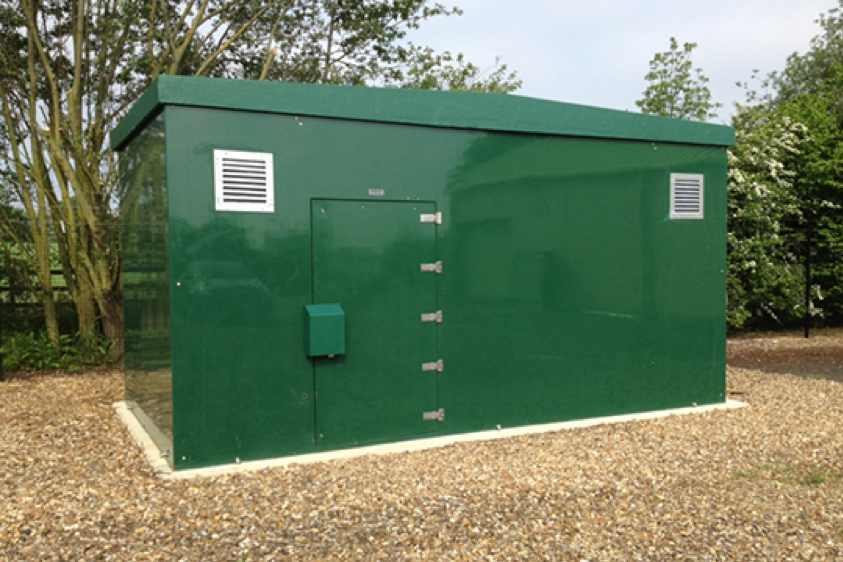GLASS REINFORCED PLASTIC - GRP
What is GRP?
Fibreglass is an excellent example of a relatively modern composite material (Invented in 1938 by Russel Games). In industry it is often referred to as Glass Reinforced Plastic (GRP).
Glass-reinforced plastic (GRP), also known as glass fiber-reinforced plastic (GFRP), is a fiber reinforced polymer made of a plastic matrix reinforced by fine fibers of glass.
GRP is composed of strands of glass. Each individual glass fibre is very fine with a small diameter, and they are woven to form a flexible fabric. The fabric is normally placed in a mould, for instance a mould for a canoe and polyester resin is added, followed by a catalyst (to speed up the reaction). The process is repeated so that there are many layers of fibre glass and resin and allowed to dry/cure. The resulting material is strong and light. Glass Reinforced Plastic can be sanded for a smooth finish and painted. It is a lightweight, extremely strong, and robust material. It is less stiff and far less brittle than carbon fiber. Plus GRP’s bulk strength and weight properties are also very favourable when compared to traditional metal alternatives
GRP is easily moulded into a wide variety of designs making it suitable for both standard and more bespoke applications.
Three samples of different weaves of fibreglass are seen below. The pattern of weave determines the strength and weight of the Glass Reinforced Plastic, after resin has been added. Different weaves have been developed for different practical applications.

Glass reinforced plastic is lightweight and has good thermal insulation properties. It has a high strength to weight ratio, making it useful for the production of products such as water tanks, surfboards, canoes, small boat hulls and similar products. The new European fighter plane, called ‘Eurofighter’, has an airframe which includes 12% glass reinforced plastic.

Typical Manufacturing Methods of GRP
We provide both custom made product solutions and private label products entirely made-to-order on the basis of the customer needs and requirements. We welcome challenges related to new or alternative composite solutions as our technology, knowledge and capacity enable Composite Plus to contribute to further development of the composite products. If you need a special product of any kind, there is a good chance that we can make it for you.
Yeung’s Fiberglass delivers comprehensive product development solutions and consultations in composite areas, also technics like:
⇒ Resin Infusion (Vacuum infusion, RTM and LRTM)
⇒ 3D infusion
⇒ Hand Lay-up
⇒ Pultrusion
⇒ Compression Moulding
⇒ Setting up GRP production
⇒ Moulding
⇒ GRP product finishing
⇒ Other GRP related activities
The typical product development process is very similar with any composite products, in industries like marine, automotive, aerospace, construction or others. This allows us to offer any product or composite part from our range of technologies needed in development and production of the above mentioned industries. Our experience allows us to find the best design and development solution, technology and materials for your new product.
Yeung’s Fiberglass can also offer competitive manufacture of products already developed. We are prepared to expand our business scope and broaden our minds to remain a significant part of the solution in composites
The GRP manufacturing process
Glass-reinforced plastic (GRP) goes through a long and complicated process before it’s finally transformed into the GRP enclosures and cabinets that we’re so familiar with. One of the most desirable properties of GRP is its incredible strength and it’s the complex manufacturing process that gives it this unique property.
Manufacturing the fibreglass
To make glass fibres that are suitable for GRP, materials such as silica sand, clay, limestone and other minerals are gradually melted in a furnace until they are liquefied. This liquid is then pushed through bushings, creating tiny little strands of the filament which are then coated with a special chemical solution.
Once this process is complete, the individual strands are then bundled together to produce what is called a roving. The diameter of each strand and number of strands in each bundle determine the weight of the roving.
The rovings are either used in the composite application or are used to make chopped strand mats, which are the basis for many GRP products we use today. Different weaves of fibreglass can be manufactured for a range of different practical applications. The pattern determines the weight and strength of GRP, so depending on your needs a different type of strand mat will be used.

Making the GRP product
Once enough of these chopped strand mats have been made, they can then be used in moulds to create a range of products. Moulds are first treated with a special chemical mix which consists of resin, a hardener, a catalyst and pigment to ensure nothing sticks it. Once this has dried and cured, the first strand mat layer is fitted to the mould.
This process is then continued, with a layer of resin and a catalyst added after each new strand mat. Like before, it is then left to cure before another is placed on top. It’s this process that gives GRP its signature strength and the more layers that are added to the mould, the stronger the end product will be.
Creating GRP is a time-consuming process, simply due to the curing time in between layers but the end result is well worth it. GRP can then be sanded and painted, and used to make enclosures, housings, covers and a number of other useful products.









